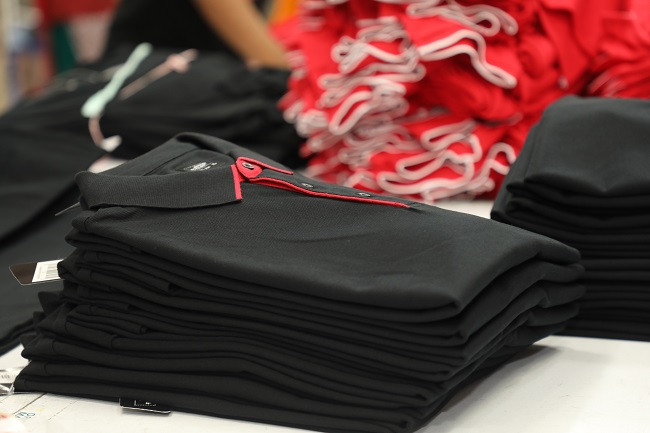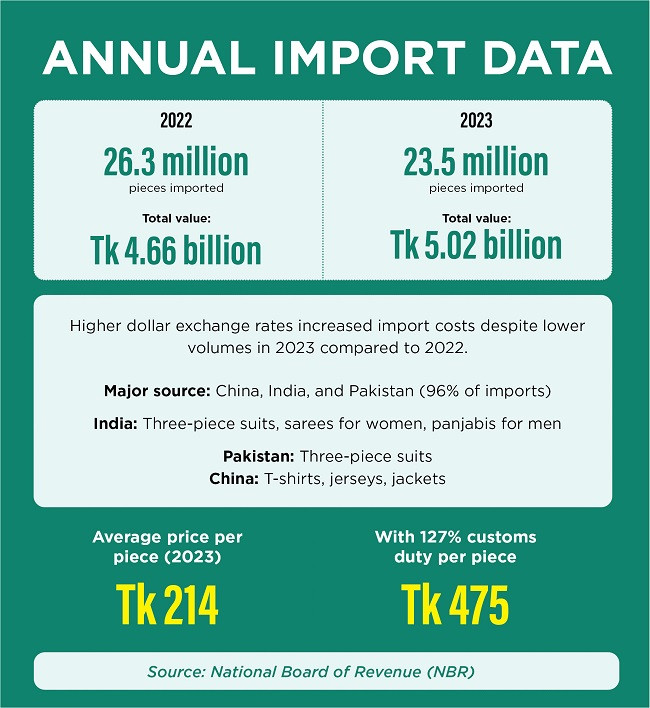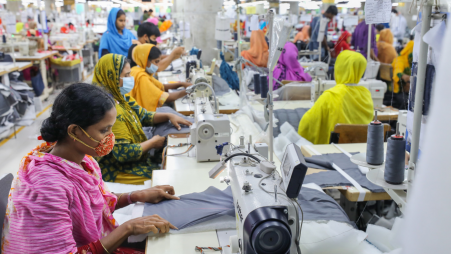Better Work, a collaboration between the United Nations ILO and the International Finance Corporation (IFC), aims to enhance working conditions through compliance and boost the productivity and profitability of RMG factories.

The government has expanded the coverage of its pilot employment injury scheme by including compensation for accidents that may occur when workers are commuting to and from work. Photo: Rajib Dhar
Apparel factories enrolled in the Better Work programme have experienced a 5% increase in production line efficiency, according to an International Labour Organisation (ILO) study.
Better Work, a collaboration between the United Nations ILO and the International Finance Corporation (IFC), aims to enhance working conditions through compliance and boost the productivity and profitability of RMG factories.
Moreover, these factories have advanced in promoting women to supervisory positions and raised female supervisors’ wages by 39%, leading to improved quality control through heightened confidence and capabilities demonstrated by trained staff, finds the study.
At a roundtable at the national daily Samakal’s office in the capital today (1 June), Khondaker Golam Moazzem, research director at the Centre for Policy Dialogue (CPD), shared these findings of the study during his keynote presentation titled “Responsible Business Conduct in the RMG Industry: Achievement and Way Forward,” which drew upon research conducted by the ILO.
The roundtable was jointly organised by Better Work Bangladesh, Samakal, and The Business Standard, with the backing of Japan’s Ministry of Economy, Trade, and Industry (METI).
Syed Fazle Niaz, team leader of the Better Work Programme Bangladesh and Zakir Hossain, associate editor of Samakal, moderated the event.
The CPD research director said participation in Better Work correlates with the capacity to negotiate higher prices for products, with Better Work-affiliated firms obtaining an average premium of 5% on export product prices.
“Better Work, on average, amplifies firms’ export revenues by 55% and volumes by 50% compared to firms not participating in the programme. Examination of customs data reveals that this extends beyond merely having a larger pool of buyers and higher order volumes,” he said.
Better Work Bangladesh started its operations in Bangladesh in 2014. Throughout its decade-long journey, it has enlisted 472 factories and partnered with 50 prominent global brands. Approximately 1.3 million workers have benefited from this programme, with 51% of them being female.
Golam Moazzem said Better Work affiliated factories have ensured a 5.4% increase in the base pay for workers, translating to an average additional income of Tk444 per month.
Furthermore, he noted that the ILO study revealed that these factory workers are saving an extra Tk552 each month.
“We should institutionalise the lessons of Responsible Business Conduct to disseminate them to other key sectors such as leather, plastic, and the frozen food industry, thus enhancing their competitiveness,” he said, adding that there exist several legislative directives promoting responsible business practices.
Golam Moazzem pointed out that Bangladesh has ratified 36 Conventions and 1 Protocol, which cover various issues such as forced labour, freedom of association, the right to organize and engage in collective bargaining, equal remuneration, workplace discrimination, child labour, and working hours, among others.
Speaking as the chief guest, HM Ibrahim, chairman of the Standing Committee on the Ministry of Labour, said the government will take measures against factory owners involved in disputes regarding workers’ salary payments. Two such owners have already been barred from travelling abroad.
Additionally, he announced plans to extend the validity of all licences from a minimum of five years to 10 years to facilitate business operations. This proposal will be discussed in the upcoming ministry meeting agenda.
Responding to a question from BKMEA Executive President Mohammad Hatem about the feasibility of providing rations to garment workers under a social safety programme, HM Ibrahim said he would consult with the relevant minister and secretary regarding this matter.
Mohammad Hatem said, “Discussions on workers’ wages are common both domestically and internationally. However, neither the ILO, trade unions nor buyers address the issue of fair pricing for products. This is deeply regrettable.”
During his opening remarks at the discussion, Tuomo Poutiainen, country director of ILO in Bangladesh, emphasised the ongoing reform programme in the garment sector, highlighting the importance of its continuity.
He underscored the necessity for the private sector to persist in investing in cost-effective methods.
Ashraf Ahmed, president of the Dhaka Chamber of Commerce and Industry (DCCI), said, “The Better Work programme has enhanced the management quality of factories, benefiting them significantly. Considering the low production costs and high profits, the program should be sustained.”
FBCCI Senior Vice President Amin Helaly said, “To sustain the current economy of the country, we must transition towards a sustainable economy. Bangladesh currently holds the second position in ready-made garment exports, with many new industries emerging around this sector. It is crucial to ensure compliance in these industries.”
He said that over the past 15 years, Bangladesh has made significant progress and aims to achieve developed country status by 2041. However, achieving this goal requires the formulation of distinct policies for small, medium, and large industries.
Laetitia Weibel Roberts, deputy programme manager of Better Work, said, “Responsible business conduct in the apparel industry hinges on mutual trust among brands, buyers, governments, and factory worker-owners. Coordination and collaboration are indispensable.”
Regarding the Better Work programme, she said, “The programme’s foundation lies in partnership. Its continuity is imperative for safeguarding workers’ rights and ensuring their security.”
Matiur Rahman, joint inspector general of the Department of Inspection for Factories and Establishments (Dife), expressed concern, stating that unemployment among workers signifies insecurity. He suggested that Better Work could address this issue.
Bangladesh Trade Union Songgho President Chowdhury Ashiqul Alam said, “Workers are facing unfair pressure to enhance productivity, potentially leading to the erosion of their rights. Neglecting this issue may result in labour unrest, causing significant repercussions for both the state and stakeholders in this sector.”
Shah Mohammad Abu Zafar, president of the Bangladesh Labour Federation (BLF), said workers’ wages remain remarkably low given the prevailing market conditions. Consequently, while factory owners and buyers prosper, workers do not.
ZM Kamrul Anam, president of the Bangladesh Textile and Garment Workers League, said according to the law, workers have the right to form trade unions in industries and factories. If the industry thrives, both the owners and the country will thrive.
























